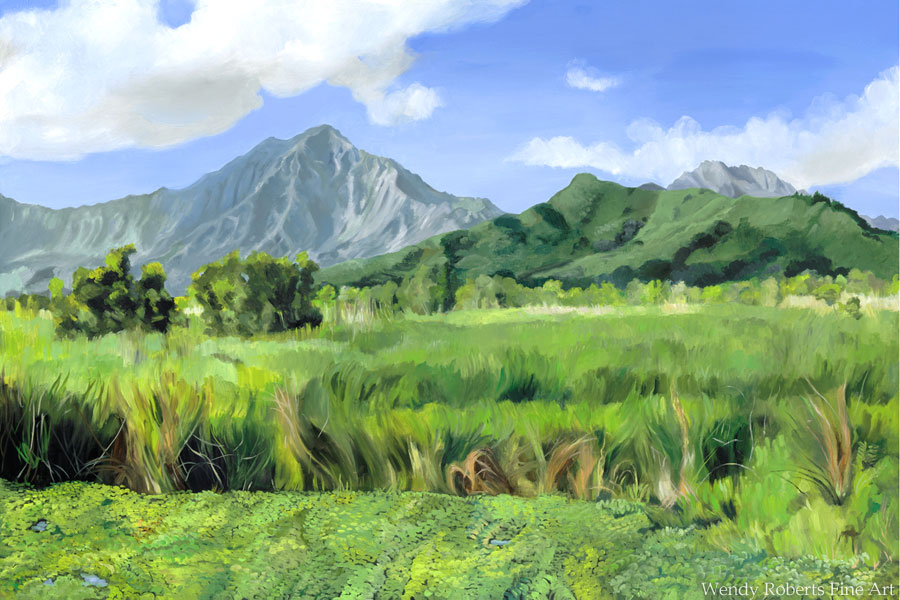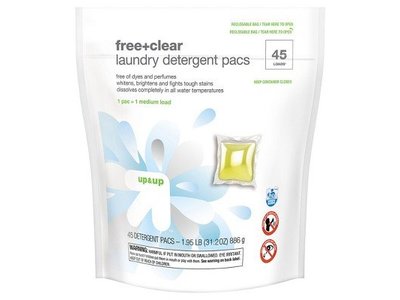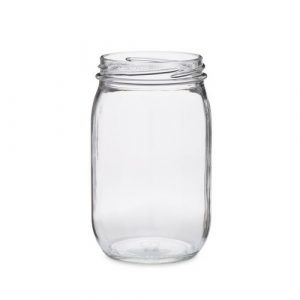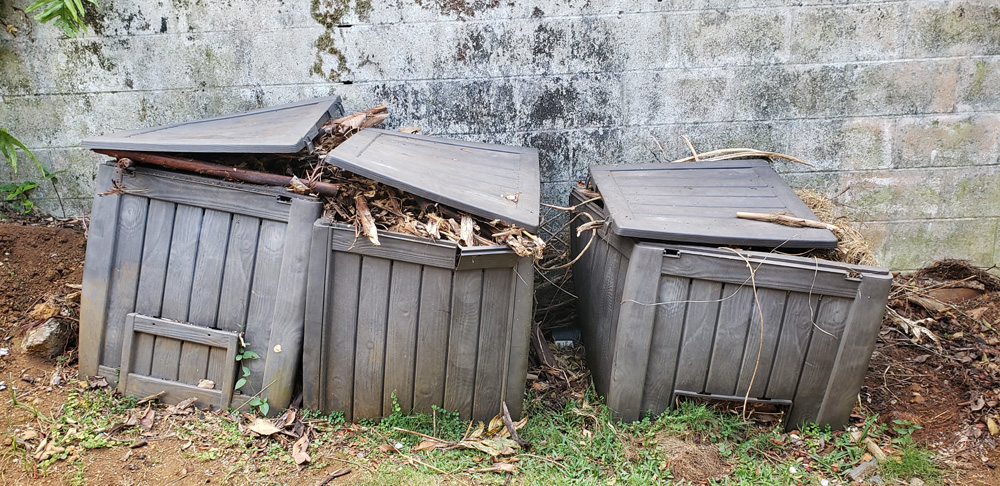Happy Earth Day!

This blog post is a little unusual. It’s not about art, but it is about the environment, like much of my art. Making my purchase habits greener is a task I have been working on for a few years now. Over time, I have been trying to buy less single-use plastic and finding ways to be more environmentally friendly. I started on the big areas of recurring products such as shampoo, detergent, beverages, and hygiene, since these are purchases that will impact my footprint again and again.
My practices are still evolving, but I wanted to share things I have found that are my favorite solutions so far. There is always room for improvement. Finding these products took some experimenting. Hopefully it can save you time and make green living easier!
LAUNDRY DETERGENT
The idea here was to ditch those big plastic jugs that most High Efficiency detergent comes in. Usually cardboard boxes of detergent get ruined here by the humidity, otherwise I would try that too.
I tried Earth Breeze and can recommend it. The detergent is like a dissolving dryer sheet. They were effective but had two drawbacks: first, they stuck together in our humid climate (I live in one of the most humid places on the planet). Also, they are still a little pricey these days. I can recommend that it does work and I would consider trying it again in the future, but I would need to keep it in a humidity-resistant container. This is only available online. It ships in eco-friendly packaging. It is truly low waste and plastic free. For my washer with its large loads, it took 2 sheets per load, or 1 sheet for small loads.
Currently, I have come to the best possible point for us and our climate by using two types of detergent. Tide plant-based detergent with the cardboard eco-box, is a good compromise between less packaging and very effective detergent. There is a plastic liner and dispenser, but the amount of plastic is far less than a regular plastic jug. It is cost effective and offers an adjustable amount for small loads, and I can add a bit of this type of detergent to my other detergent pods to increase the size of the maximum load for washing large loads. It is also making the attempt to be less harmful with the actual ingredients, which I appreciate. This is best found at a local store to prevent shipping waste.
Up and Up Free pods: These are dissolving pods that come in a plastic bag. The bag is a lot less plastic than a jug. It’s not perfect, but the cleaning power is far more effective and cost-saving than some of the other things I have tried. The two current detergents I use (Tide and Up & Up) cost about the same per load.

Here on Oahu, in Kaimuki, there is a store where you can take your own mason jars and containers to buy lots of the types of cleaners and detergents that would normally be sold using bulky plastic packaging. If I lived closer to this store, it would be possibly a better solution that what I am doing now. If you live close by, check it out and see how it compares! https://www.keepitsimplezerowaste.com/
CLOTHING
10% of the world’s carbon pollution is due to clothing creation. Thus, I do as much thrifting as possible. Since COVID, my local stores are not allowing us to try on clothing, which for me means I cannot buy – I am not a regular matching top and bottom size. I found a solution. With certain online thrift stores, like ThredUp you have measurements for each body marker and can assure a perfect fit every time. Thrifting locally is even more efficient since there’s no shipping and no cardboard involved, but with both methods of thrift shopping, you are reusing, which is better than recycling! If you are done with some of your clothes, consider donating them to a local charity or selling them online. If your clothes wear out, consider turning them into rags or quilts. The best part about thrifting is that I have found some of my most unbelievably cool pieces of clothing through thrifting – many thrift stores have clothing from all over the world and all different cultures!
SHAMPOO AND CONDITIONER
There are shampoo bars that do not require a big plastic bottle. They require more vigor to apply in your hair, since you need to be able to scrub firmly to get it to spread evenly throughout your wet hair, but the results can be excellent! I really like ‘Olili – and this product is my sole disclaimer item in this article. I am friends with the doctor who designed these and I helped test out the formulations for these bars. I am often gifted the bars, but she has not asked me to post this. I genuinely like the bars and think they offer a great option for plastic free shampoo and conditioner. They are really good for controlling curl in humidity and I have seen a lot of similar products starting to show up. Give bar-form shampoo a try and see if you like it! It saves a lot of bottles over time! Here is my friend’s version of shampoo bars that you can order online: https://olili.company.site/
CLOTH SANITARY PADS
Cloth pads sound terrible, but they are great! They are cleaner and more comfortable than you think, so please let me convince the ladies reading this to buy a small set and try them out! If you don’t like them, you can keep them on hand only for emergencies (like if you run out of the disposables). They are absolutely reliable – way more absorption capacity and more breathable than most disposables, and no more last-minute trips to the store because you have run out of supplies. This saves TONS of single-use plastic and trees. You can just toss them through the wash twice if they are not 100% like-new the first wash (they usually only need one wash to be perfectly clean). I know this may be rather shocking to read about feminine hygiene on my art site, but isn’t disregarding societal norms a special talent of artists? Let’s talk about the important things! Besides, if someone doesn’t talk about cloth pads, how is anyone supposed to find out about them? The only time I DON’T use cloth is if I am travelling because the laundry logistics on a trip can be stressful. Using cloth instead of disposable pads will save you about $100 per year (in 2022) and prevent a lot of plastic waste. Here’s my favorite design (and there are lots of others like them).
SODA

I love soda. We moved toward using a home carbonator – we like our Drinkmate, but Sodastream is very good too. The bottles that hook into the machine are sturdy and highly reusable. We have been using the same 3 bottles for almost 2 years now. The carbon dioxide canisters for the actual carbonation are Soda Stream canisters. They can be exchanged via Target or online and are refilled and sold again. Exchanged cannisters earn you a discount on the refills. It is slightly cheaper than buying soda, but generates a lot less waste. The drink syrup we use is also mostly Soda Stream and it is highly concentrated. It is available in a wide variety of flavors, and it is in a plastic bottle that is recyclable (even though it is type 2 plastic, it probably doesn’t get recycled), but it is much less packaging than cans or individual bottles. You can also make sparkling water with real fruit. We have saved a lot of container waste since getting this kitchen gadget!
COFFEE
K-cups are terrible for the environment. If you use a Keurig machine, please consider returning to a regular coffee machine and bagged or bulk beans or grounds. It’s much less plastic waste than using a Keurig and having a separate plastic cup every single time you want a cup of coffee. If you are a coffee snob, opt for whole beans. You can keep your coffee fresh for longer by using vacuum seal containers or alternately, an airtight container in your freezer. Use a coffee grinder to grind the beans directly before you use them. Beans last a lot longer than grounds. Any electric burr grinder is a solid choice, but here’s my favorite coffee grinder.
OTHER EARTH-FRIENDLY PRODUCTS AND TACTICS…
SUNSCREEN
Unfortunately, there is nothing you can do about sunscreen in plastic containers, but you can assure that the contents will not hurt the coral reefs. Mineral sunscreen with zinc as the main ingredient is the gold standard here (titanium dioxide and zinc oxide). There are lots of “reef friendly” sunscreens but those still sometimes use chemicals that could be harmful in smaller amounts. It’s best to search out a kids zinc sunscreen or mineral sunscreen. Look at the label and make sure it has zinc and that it has none of the chemicals beginning with “Oxy” or “Octo” if you want the best coral-friendly option. Some of my family members dislike the way zinc feels on skin because it is so thick, so they tend toward “reef safe” or “reef friendly”. They are not as good as mineral sunscreens, but they are better than sunscreen that includes oxybenzone, so get the best option you can tolerate.
MASON JARS

Cutting down on food waste reduces the need to throw away food and buy new food. Mason jars are indispensable in this climate! The ultimate air tight storage the prevents food waste via weevils and/or humidity! Rice is usually the way weevils enter your kitchen. Place your rice in the freezer for 2 days and then pour it into a mason jar with the metal airtight lid to prevent them from hatching and ruining whole cupboards full of food! Weevils get into your cereal, rice, pasta, breadcrumbs, so if you stop this problem, you save a lot of money and hassle. Also, we don’t have to buy plastic containers as much if we use mason jars for the types of foods that are suited to the tall, relatively thin proportions. The type of plastic tubs you get at the store degrade over time, eventually cracking. Mason jars usually only need new lids once in a while. If you break a glass jar, it’s a hassle, but it doesn’t happen very often for us.
COMPOST PILE – A LAZY GARDNER’S EDITION

If you have a yard, having a place in a discreet corner where you can make a pile or a bin of yard and food scraps to turn into soil saves cubic yards of soil and the plastic they have to use to encase soil for sale at the store. Other people actively compost better than I do, but my yard scraps are still turning into gorgeous black soil and I’m doing almost nothing to make it happen. I am a good composter because I am so lazy about it that I am the poster child proving anyone with a yard can do this! You do not have to buy bugs. Helpful (and possibly icky) creatures like worms, beetles, snails, etc… will find your bin or pile and become your “employees” to work the waste into beautiful soil. Do not worry about the bugs. You will rarely see them unless you are actively trying to use your compost. They tend to attract predators (like birds and lizards) that keep them under control if they try to escape the safe cozy pile. You can allow your critters to exit the shovel via crawling or slithering to return to the bin before you place your rich new soil in a bucket or wheelbarrow for minimal visibility/contact. You don’t really have to use a pitchfork to stir the pile every month (that is faster but optional), you don’t have to carefully control the ratios of waste you place in the pile or bin. There’s a short list of “don’ts” to be aware of (see below). I can’t really quantify how many bags of soil I haven’t bought, but I can assure you it is A LOT! I was amazed at how much the price has jumped lately too! I may not like to socialize with my “compost employees”, but I love the results of their work!
DO ADD THESE TO YOUR BIN:
Fruit & veggie waste (banana peels; cuttings from meal prep like onion skins, carrot peels, or apple cores; moldy produce you didn’t eat in time; rotting fruit on the ground)
Weeds (let them shrivel in the sun before adding to a pile. They should die in a bin from lack of sunlight)
Lawn clippings & dead leaves
Jack o’ lanterns and the pumpkin innards from carving them.
Non-wood pruning waste like leaves and stems
Egg shells (some people say no, but I haven’t had any issue with it)
Potato peels (ditto to egg shells – maybe they just take too long for actual compost people who worry about worms and stirring, but I haven’t had issues with them.)
DO NOT ADD:
Meat (stinky & unsafe! Dangerous germs, attracts meat-eating predators in some areas)
Woody branches and vines (takes forever to break down)
Produce Stickers (like the stickers on a banana peel or an apple – usually they do not break down)
